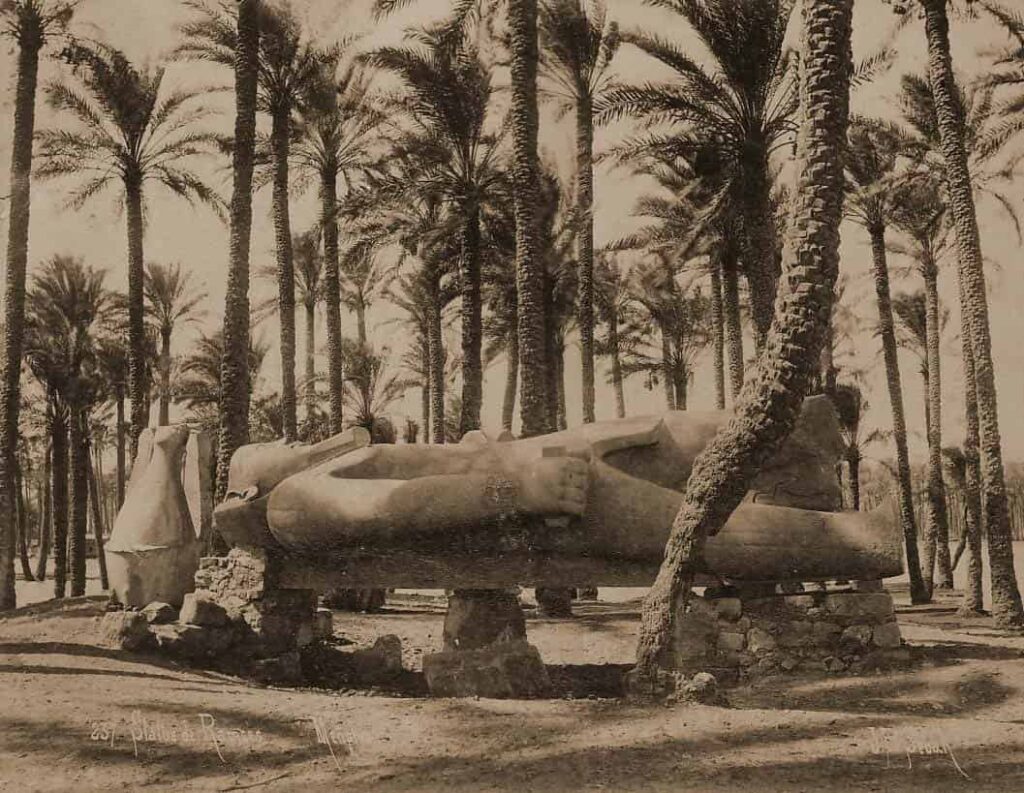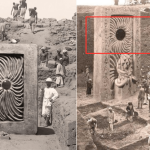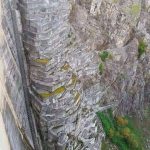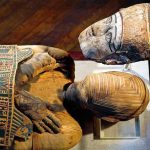The enormous bust of Ramesses II

The Statue of Ramesses II is a giant sculpture of 12 meters high carved in the New Kingdom of Egypt, during the reign of Ramses II, Pharaoh of the Nineteenth Dynasty of Egypt.
Finding
The colossus was discovered in 1820 by the Italian traveler Giovanni Battista Caviglia and was originally located on the southern flank of the Great Temple of Ptah, (“Lord of magic”, “Master builder”, inventor of masonry, patron of architects and craftsmen. He was also attributed healing power), a temple located in Memphis, capital of the Old Kingdom of Egypt and of the Nome I of Lower Egypt.

It was located south of the Nile River Delta, in the region between Lower and Upper Egypt.
In 1820 it was to be transported to the British Museum in London, an option that was discarded due to the difficulties of transporting the monumental sculpture.
Transfers
After its discovery in 1820, the statue lay for 130 years among the ruins of Memphis, about 40 km south of Cairo. In 1954 President Gamal Abdel Nasser ordered the colossal figure to be brought to the Egyptian capital to celebrate the second anniversary of the successful 1952 revolution.

The fragments were transported and the statue was assembled, restored and stood in the center of Bab Al-Hadid Square, in front of the main railway station of the city.
For half a century it witnessed the intense traffic of the city, but in 2006 the Egyptian government, concerned that air pollution would damage the figure, decided to move it to Giza in anticipation of its future placement at the entrance of a new museum.

On August 25, 2006, the transfer to Giza was carried out in a complicated operation that lasted 10 hours, and there it was restored. In January 2018 it was again moved to the entrance steps of the new Grand Egyptian Museum.
Description
It stands 10 meters high (although it is believed to have been originally 13 meters high) and weighs more than 80 tons. It is made of limestone.
The sculpture has been carved without any imperfection being visible.










